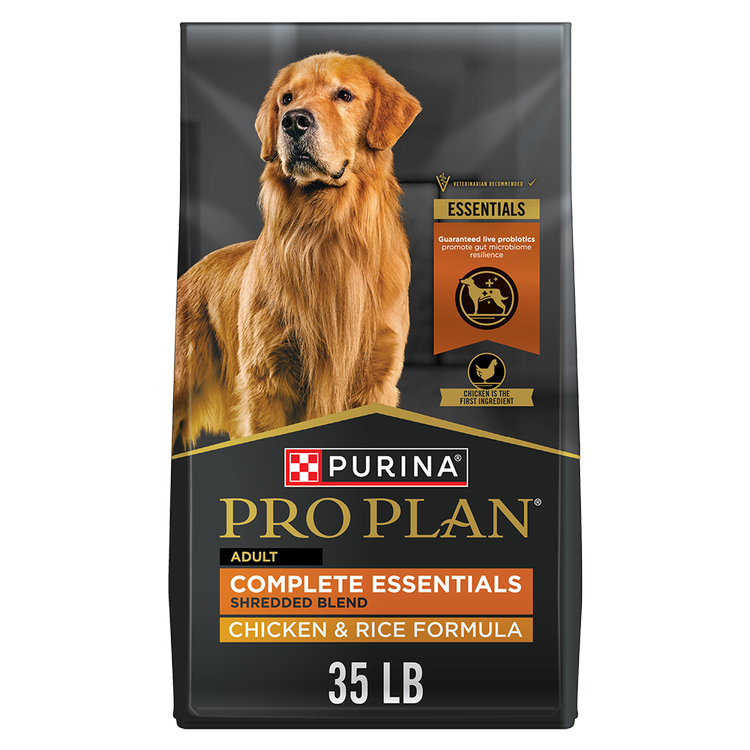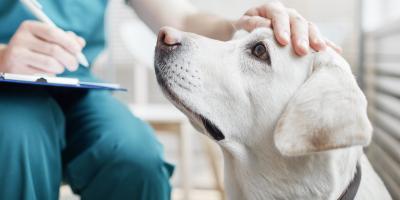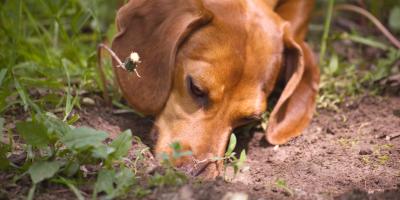Sometimes it can be hard to get your pet to eat their complete and balanced dog food. There’s a big difference, however, between a canine who is a finicky eater, and one who stops eating altogether.
So, if you’re wondering, “Why won’t my dog eat?”, follow these tips to identify the source of the problem and learn what you can do about it.
Look for Other Symptoms
It’s always a good idea to contact your veterinarian if your dog suddenly stops eating. While there are several temporary, benign reasons that could be behind their lack of appetite, it’s important to rule out illness and other potential health problems.
Possible Reasons Why Your Dog Stopped Eating
To answer the question of, “Why is my dog not eating?”, it helps to consider environmental and dietary factors that may have recently changed. In some cases, there might also be a deeper medical problem at play. Let’s take a closer look.
Your Canine Is a Finicky Eater
Similar to a child who refuses to eat anything but chicken nuggets, a finicky dog only wants to eat specific food. Whether you introduced something new at mealtime or your pet simply decided they don’t like their dry food anymore, some canines have strong preferences.
While you shouldn’t force your dog to eat food they resist, be careful about placating them. Offering a menu of options to a finicky eater can reinforce their picky habits.
Sudden Change in Diet
If you recently switched from wet food to dry, or introduced a brand-new fare, your pet may not like it or may be reluctant to try. Before you give up, though, try mixing the old and new food. Then slowly decrease the amount of old over a 7- to 10-day period.
Have a new dog who won’t eat? Make sure to buy the type, flavor and brand of food they’re used to or that the rescue group/foster was feeding them—maybe even get a diet history before you bring them home.
Warm Weather
It’s common for dogs to eat less and drink slightly more in warmer weather conditions. Their appetite should pick back up once it cools off.
Excessive Eating Between Meals
Eating a lot throughout the day may explain your dog’s loss of appetite.
Treats act as a good training tool or a tasty snack, but too many can exceed daily caloric needs, resulting in less hunger during meals. Also, canines are known to be garbage pickers/dumpster divers, so keep the can out of reach.
If your dog is getting table scraps often, they may not be hungry for their own food or may prefer to wait for your next meal.
Try to feed your dog at the same time(s) every day and keep table scraps and treats to no more than 10 percent of their daily calories. This establishes a schedule and can strengthen their meal preferences.
Dental Disease
When a dog has dental disease, they may suffer from a broken tooth or a gum infection. This can make eating painful. If you think your pet might have serious dental problems, contact your veterinarian.
Ear Infections
Pain and inflammation from an ear infection can make chewing difficult. In particular, hard food may become less appetizing. If your dog is scratching, has black or yellow discharge from their ears, or you notice a foul smell, they might have an infection.
Side Effects of Medications
Nausea and decreased appetite are side effects of a variety of medications. If your dog stops eating while they’re on a new prescription, ask your veterinarian if a substitute medication might work. You can also try giving the pill(s) with food to ease digestive upset, if the veterinarian approves.
Why Your Dog Does Not Want to Eat – Other Possible Reasons
- Age and breed. Some adolescent puppies are known to alternate between devouring and avoiding their meals. Larger breeds in particular are prone to this behavior. Older dogs may lose interest in meals or even forget it’s time to eat. Plus, if they have arthritis or muscle weakness, it may be harder for them to eat a whole portion in one sitting.
- Teething pain. Puppies with emerging teeth may skip meals—especially if they consist of dry food—due to dental pain.
- Food supplements. Some canines might be sensitive to supplements added to their meals.
How to Get Your Dog to Eat
Don’t Force Your Dog to Eat
If you’re wondering, “Why won’t my dog eat?” because they completely reject their food, don’t force them to eat. Dogs can go more than 24 hours without eating and not have negative repercussions, but since it could be a sign of underlying illness, contact your veterinarian.
Alternatively, there could be a problem with the food itself. While rare, pet food can become spoiled or contaminated. Your canine may sense this and want to avoid eating it.
(Learn more about dog food recalls and how Purina ensures the quality of its ingredients and processing.)
Tips to Get Your Dog to Eat
Although you should rule out underlying illnesses and other potential causes for your dog not eating, there are some simple things you can try at home:
- Try feeding in a different location. Sometimes the current environment is too noisy and distracting.
- Clean the bowl more frequently.
- Use a puzzle feeder or other feeding enrichment tool to make meals more fun.
Your veterinarian is also a great resource for more feeding tips and tricks to encourage your dog to eat their meals.
For additional dietary and health tips for your dog, learn more from our experts on our Pet Expertise page.
Related articles

Reward Yourself with myPurina
Earn and redeem rewards for Purina products with the myPurina app.








